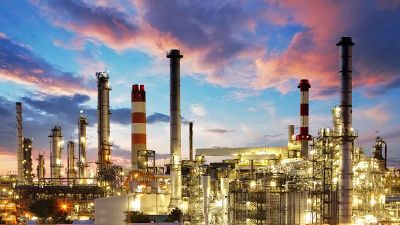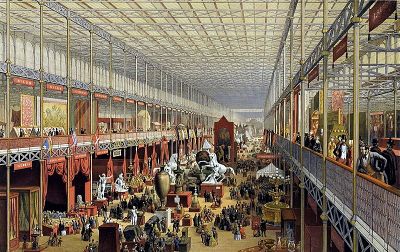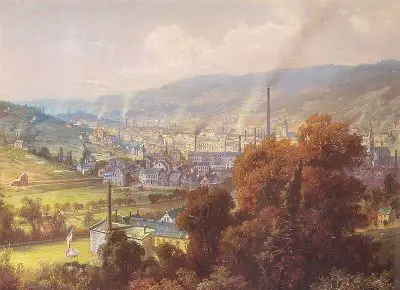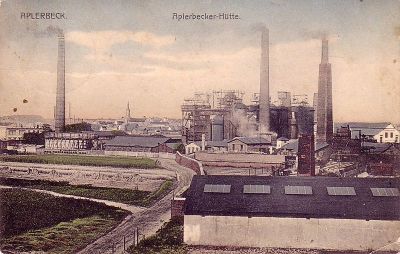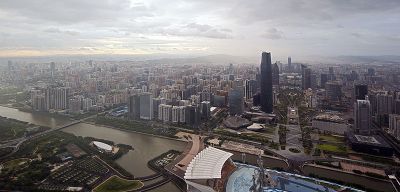Industrialization
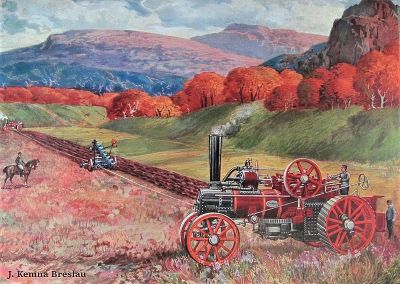
Industrialization (or industrialisation) is the period of social and economic change that transforms a human group from an agrarian society into an industrial society. This means converting to a socioeconomic order in which industry is dominant, which involves an extensive reorganization of the economy for the purpose of manufacturing. This process increases the food supply, creates a wider variety of jobs, stimulates technological development, and improves the external standard of living.
However, there are also many unintended consequences, both economically and socially. As industrial workers' incomes rise, markets for consumer goods and services of all kinds tend to expand and provide a further stimulus to industrial investment and economic growth. Moreover, family structures tend to shift as extended families tend not to live together in one household or location, as family members migrate following job opportunities. Beyond these social consequences, industrialization has had negative effects on the environment, particularly through pollution. Balancing the positive and negative consequences of industrialization remains a challenge.
History
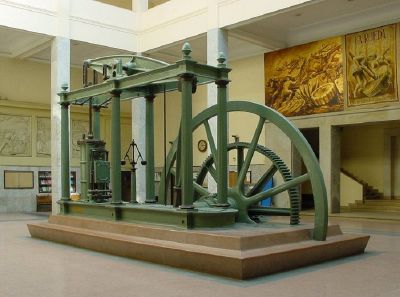
In most pre-industrial societies, the majority of the population were focused on producing their means of survival through subsistence farming. Famines were frequent. Some, such as classical Athens, had trade and commerce as significant factors. As a result, Greeks could enjoy wealth far beyond a sustenance standard of living through the use of slavery.[1]
What some have termed "Proto-industrialization," involving regional development of rural handicraft production for external markets, took place in Europe as well as in Mughal India prior to the Industrial Revolution.[2]
After the last stage of this Proto-industrialization, the Industrial Revolution which transformed the agricultural to an industrial economy took place, starting in Great Britain, followed by Belgium, Switzerland, Germany, and France.[3] This early industrialization was characterized by technological progress, a shift from rural work to industrial labor, financial investments in new industrial structure, and early developments in class consciousness. Later commentators have called this the First Industrial Revolution.[4]
Industrialization started with the mechanization of the textile industries, the development of iron-making techniques and the increased use of refined coal. Once started, it spread. Trade expansion was enabled by the introduction of canals, improved roads and railways. The introduction of steam power (fueled primarily by coal) and powered machinery (mainly in textile manufacturing) underpinned dramatic increases in production capacity. The development of all-metal machine tools in the first two decades of the nineteenth century facilitated the manufacture of more production machines for manufacturing in other industries. The effects spread throughout Western Europe and North America during the nineteenth century, eventually affecting most of the world.
The "Second Industrial Revolution" labels the later changes that came about in the mid-nineteenth century after the refinement of the steam engine, the invention of the internal combustion engine, the harnessing of electricity and the construction of electric-power lines. The invention of the assembly line gave this phase a boost.[5]
Industrial revolution in Europe
The era known as the Industrial Revolution was a period in which fundamental changes occurred in agriculture, textile and metal manufacture, transportation, economic policies, and the social structure beginning in Great Britain and spreading throughout Europe. This period is appropriately labeled ‚Äúrevolution,‚ÄĚ for it thoroughly destroyed the old manner of doing things; yet the term is simultaneously inappropriate, for it connotes abrupt change.
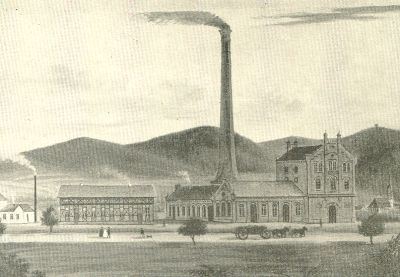
The changes that occurred during this period (1760-1850), in fact, occurred gradually. The year 1760 is generally accepted as the ‚Äúeve‚ÄĚ of the Industrial Revolution. In reality, this eve began more than two centuries before this date. The late eighteenth century and the early nineteenth century brought to fruition the ideas and discoveries of those who had long passed on, such as, Galileo, Francis Bacon, Ren√© Descartes, and others.
In the eighteenth and nineteenth centuries, the United Kingdom experienced a massive increase in agricultural productivity known as the British Agricultural Revolution, which enabled unprecedented population growth, freeing a significant percentage of the workforce from farming, and helping to drive the Industrial Revolution.
Due to the limited amount of arable land and the overwhelming efficiency of mechanized farming, the increased population could not be dedicated to agriculture. New agricultural techniques allowed a single peasant to feed more workers than previously. However, these techniques also increased the demand for machines and other hardware, which had traditionally been provided by the urban artisans. Artisans employed rural workers to increase their output and meet the country's needs.
British industrialization involved significant changes in the way that work was performed. The process of creating a good was divided into simple tasks, each one of them being gradually mechanized in order to boost productivity and thus increase income. The new machines helped to improve the productivity of each worker. However, industrialization also involved the exploitation of new forms of energy. In the pre-industrial economy, most machinery was powered by human muscle, by animals, by wood-burning or by water-power. With industrialization these sources of fuel were replaced with coal, which could deliver significantly more energy than the alternatives.
The accumulation of capital allowed investments in the scientific conception and application of new technologies, enabling the industrialization process to continue to evolve. The industrialization process formed a class of industrial workers who had more money to spend than their agricultural cousins. They spent this on items such as tobacco and sugar, creating new mass markets that stimulated more investment as merchants sought to exploit them.[6] The mechanization of production spread to other European countries and to British colonies, helping to make those areas the wealthiest, and shaping what is now known as the Western world.
Some historians have argued that the possession of so-called 'exploitation colonies' eased the accumulation of capital to the countries that possessed them, speeding up their development.[7] Some have stressed the importance of natural or financial resources that Britain received from its many overseas colonies or that profits from the British slave trade between Africa and the Caribbean helped fuel industrial investment.[8]
With these arguments still find some favor with historians of the colonies, most historians of the British Industrial Revolution do not consider that colonial possessions formed a significant role in the country's industrialization. Whilst not denying that Britain could profit from these arrangement, they believe that industrialization would have proceeded with or without the colonies.[3]
Early industrialization in other countries
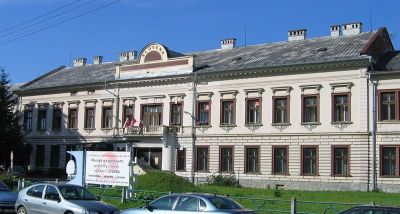
The Industrial Revolution spread southwards and eastwards from its origins in Northwest Europe.
After the Convention of Kanagawa issued by Commodore Matthew C. Perry forced Japan to open the ports of Shimoda and Hakodate to American trade, the Japanese government realized that drastic reforms were necessary to stave off Western influence. The Tokugawa shogunate abolished the feudal system. The government instituted military reforms to modernize the Japanese army and also constructed the base for industrialization. In the 1870s, the Meiji government vigorously promoted technological and industrial development that eventually changed Japan to a powerful modern country.
The Soviet Union invested a large part of its resources to enhance its industrial production and infrastructures to assure its survival, thus becoming a world superpower.[9] During the Cold war, the other Warsaw Pact countries, organized under the Comecon framework, followed the same developing scheme, albeit with a less emphasis on heavy industry.
Industrialization in Asia
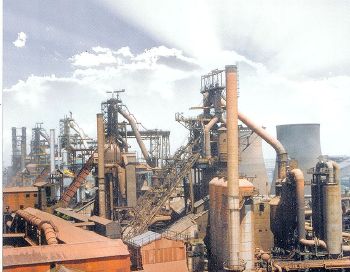
Apart from Japan, where industrialization began in the late nineteenth century, a different pattern of industrialization followed in East Asia. One of the fastest rates of industrialization occurred in the late 20twentieth century across four places known as the Asian tigers (Hong Kong, Singapore, South Korea, and Taiwan). Between the early 1960s and 1990s, they underwent rapid industrialization and maintained exceptionally high growth rates of more than 7 percent a year. By the early twenty-first century, these economies had developed into high-income economies, specializing in areas of competitive advantage. Hong Kong and Singapore have become leading international financial centers, whereas South Korea and Taiwan are leaders in manufacturing electronic components and devices.
In the case of South Korea, the largest of the four Asian tigers, a very fast-paced industrialization took place as it quickly moved away from the manufacturing of value-added goods in the 1950s and 1960s into the more advanced steel, shipbuilding, and automotive industry in the 1970s and 1980s, focusing on the high-tech and service industry in the 1990s and 2000s. As a result, South Korea became a major economic power.
This starting model was afterwards successfully copied in other larger Eastern and Southern Asian countries. The success of this phenomenon led to a huge wave of offshoring ‚Äď Western factories or Tertiary Sector corporations choosing to move their activities to countries where the workforce was less expensive and less collectively organized.
China and India, while basically following this development pattern, made adaptations in line with their own histories and cultures, their major size and importance in the world, and the geo-political ambitions of their governments. Both China and India have also started to make significant investments in other developing countries, making them significant players in today's world economy.
India's government is also investing in economic sectors such as bioengineering, nuclear technology, pharmaceutics, informatics, and technologically oriented higher education, exceeding its needs, with the goal of creating several specialization poles able to conquer foreign markets.
Newly industrialized countries
Since the mid to late twentieth century, most countries in Latin America, Asia, and Africa, including Brazil, Indonesia, Malaysia, Mexico, Philippines, South Africa, and Turkey, have experienced substantial industrial growth, fueled by exporting to countries that have bigger economies: the United States, China, India, and the European Union.
These countries, sometimes called newly industrialized countries (NICs), have economies have not yet reached a developed country's status but have, in a macroeconomic sense, outpaced their developing counterparts. Such countries are still considered developing nations and only differ from other developing nations in the rate at which an NIC's growth is much higher over a shorter allotted time period compared to other developing nations.[10]
Consequences
Transportation
As an integral part of determining the cost and availability of manufactured products was improvement of transportation. Finished products, raw materials, food, and people needed a reliable, quicker, and less costly system of transportation.
Canals and rivers had long been used as a means of internal transportation. The principles of rail transport were already in use in the late 1700s. By 1800, more than 200 miles of tramway served coal mines in Britain. It is not surprising, then, to find a number of engineers connected with coal mines, for example George Stephenson, searching for a way to apply the steam engine to railways. Railroads proliferated in Britain, to more than 7,000 miles built by 1852, being the dominant form of transportation for almost a century.
Capital
Prior to industrialization, land was the primary source of wealth. However, a new source of great wealth grew from the Industrial Revolution, derived from the ownership of factories and machinery. Those investors in factories and machinery, the capitalists, gave the necessary impetus to the speedy growth of the Industrial Revolution.
Two kinds of capital were needed: long-term capital to expand present operations, and short-term capital to purchase raw materials, maintain inventories, and to pay wages to their employees. The long-term capital needs were met by mortgaging factory buildings and machinery. It was the need for short-term capital which presented some problems.
That need was accommodated by extending credit to the manufacturers by the producers or dealers. A supplier of raw materials might wait 6 to 12 months for payment of the goods, after the manufacturer was paid for the finished product.
The early 1700s brought with it the first private banks, founded by those who were involved in a variety of endeavors (goldsmiths, merchants, manufacturers). Many industrialists favored establishing their own banks as an outlet for the capital accumulated by their business and as a means for obtaining cash for wages. Their limited resources were inadequate to meet the demands of the factory economy. A banking system was eventually set up to distribute capital to areas where it was needed, drawing it from areas where there was a surplus.[11]
Pollution
Historically, industrialization was associated with an increase in pollution both from the toxic waste from factories, especially those producing chemicals, and from industries heavily dependent on fossil fuels. With an increasing focus on sustainable development and green industrial policy practices, industrialization increasingly includes technological leapfrogging, with direct investment in more advanced, cleaner technologies.
Changes in social structure
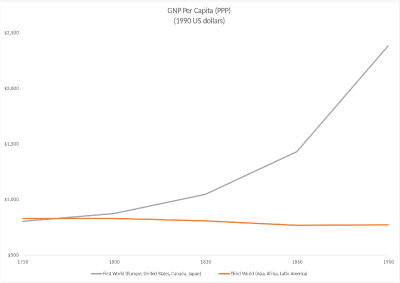
The Industrial Revolution was accompanied by changes in social structure, the main change being a transition from farm work to factory related activities. This resulted in the creation of a class structure that differentiated the commoners from the well off and the working category. It distorted the family system as most people moved into cities and left the farm areas, which also played a major role in the transmission of diseases. The place of women in society then shifted from being home cares to employed workers. Furthermore, industrialization contributed to increased use of child labor.[13]
In the eighteenth century, the population grew at a faster rate than ever before. There are four primary reasons for this growth: a decline in the death rate, an increase in the birth rate, the virtual elimination of the dreaded plagues, and an increase in the availability of healthy food. There were several other reasons for the growth of the population: Industry provided higher wages to individuals than were being offered in the villages. This allowed young people to marry earlier in life, and to produce children earlier. Also, industry provided people with improved clothing and housing.
Urbanization
The concentration of labor in factories increased urbanization and the size of settlements, to serve and house the factory workers.
As the Industrial Revolution was a shift from the agrarian society, people migrated from villages in search of jobs to places where factories were established. Settlements grew around the factories. This shifting of rural people led to urbanization and an increase in the population of towns.
In some cases factories started in existing towns, which was desirable because a labor pool was readily available. The development of the steam engine to drive machinery freed the mill owners from being locked into a site that was close to swiftly moving water. Thus, factories could be located closer to existing population centers or seaports, fulfilling the need for labor and transportation of materials.
Changes in family structure
Family structure changes with industrialization. Sociologist Talcott Parsons noted that in pre-industrial societies there is an extended family structure spanning many generations who probably remained in the same location for generations. In industrialized societies the nuclear family, consisting of only parents and their growing children, predominates. Families and children reaching adulthood are more mobile and tend to relocate to where jobs exist. Extended family bonds become more tenuous.[14]
Notes
- ‚ÜĎ Ben Akrigg, Population and Economy in Classical Athens (Cambridge University Press, 2019, ISBN 1107027098).
- ‚ÜĎ J√≥zsef B√∂r√∂cz, The European Union and Global Social Change (Routledge, 2009, ISBN 0415481023).
- ‚ÜĎ 3.0 3.1 Emma Griffin, A short History of the British Industrial Revolution (Red Globe Press, 2018, ISBN 1352003244).
- ‚ÜĎ Sidney Pollard, Peaceful Conquest: The Industrialization of Europe 1760‚Äď1970 (Oxford University Press, 1981, ISBN 0198770936).
- ‚ÜĎ Eric Jones, The European Miracle: Environments, Economics and Geopolitics in the History of Europe and Asia (Cambridge University Press, 2003, ISBN 052152783X).
- ‚ÜĎ Robin Blackburn, Enslavement and industrialization BBC, February 17, 2011. Retrieved September 24, 2021.
- ‚ÜĎ Eric Williams, Capitalism and Slavery (Franklin Classics, 2018, ISBN 0343147610).
- ‚ÜĎ Kenneth Pomeranz, The Great Divergence (Princeton University Press, 2000, ISBN 0691005435).
- ‚ÜĎ Joshua R. Keefe, Stalin and the Drive to Industrialize the Soviet Union Inquiries 1(10) (2009): 1. Retrieved September 24, 2021.
- ‚ÜĎ Patrick H. O‚ÄôNeil, Essentials of Comparative Politics (W. W. Norton & Company, 2020, ISBN 0393532771).
- ‚ÜĎ Rondo Cameron, Banking in the Early Stages of Industrialization (Oxford University Press, 1967, ISBN 019500843X).
- ‚ÜĎ Paul Bairoch, Economics and World History: Myths and Paradoxes (University of Chicago Press, 1995, ISBN 0226034631).
- ‚ÜĎ Freddie Wilkinson, Industrialization, Labor, and Life National Geographic, January 27, 2020. Retrieved September 24, 2021.
- ‚ÜĎ Talcott Parsons and Robert E. Bales, Family: Socialization and Interaction Process (Routledge, 2007, ISBN 0415436516).
ReferencesISBN links support NWE through referral fees
- Akrigg, Ben. Population and Economy in Classical Athens. Cambridge University Press, 2019. ISBN 1107027098
- Bairoch, Paul. Economics and World History: Myths and Paradoxes. University of Chicago Press, 1995. ISBN 0226034631
- Böröcz, József. The European Union and Global Social Change. Routledge, 2009. ISBN 0415481023.
- Cameron, Rondo. Banking in the Early Stages of Industrialization. Oxford University Press, 1967. ISBN 019500843X)
- Griffin, Emma. A Short History of the British Industrial Revolution. Red Globe Press, 2018. ISBN 1352003244
- Jones, Eric. The European Miracle: Environments, Economics and Geopolitics in the History of Europe and Asia. Cambridge University Press, 2003. ISBN 052152783X
- Landes, David S. The Unbound Prometheus: Technological Change and Industrial Development in Western Europe from 1750 to the Present. Cambridge University Press, 2003. ISBN 052153402X
- O’Neil, Patrick H. Essentials of Comparative Politics. W. W. Norton & Company, 2020. ISBN 0393532771
- Parsons, Talcott, and Robert E. Bales. Family: Socialization and Interaction Process' Routledge, 2007. ISBN 0415436516
- Pollard, Sidney. Peaceful Conquest: The Industrialization of Europe 1760‚Äď1970. Oxford University Press, 1981. ISBN 0198770936
- Pomeranz, Kenneth. The Great Divergence. Princeton University Press, 2000. ISBN 0691005435
- Williams, Eric. Capitalism and Slavery. Franklin Classics, 2018. ISBN 0343147610
Credits
New World Encyclopedia writers and editors rewrote and completed the Wikipedia article in accordance with New World Encyclopedia standards. This article abides by terms of the Creative Commons CC-by-sa 3.0 License (CC-by-sa), which may be used and disseminated with proper attribution. Credit is due under the terms of this license that can reference both the New World Encyclopedia contributors and the selfless volunteer contributors of the Wikimedia Foundation. To cite this article click here for a list of acceptable citing formats.The history of earlier contributions by wikipedians is accessible to researchers here:
The history of this article since it was imported to New World Encyclopedia:
Note: Some restrictions may apply to use of individual images which are separately licensed.
